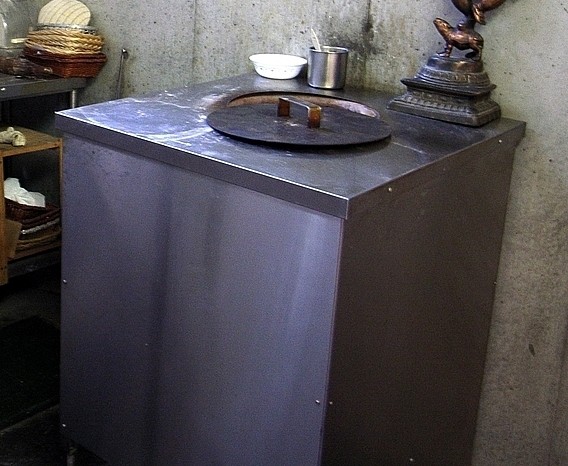 Walking through my company’s newly renovated cafeteria, I looked behind one of the counters and noticed something like what you see to the right. For those of you who don’t know, it is a tandoor, an oven used in cooking Indian food. Why would a Silicon Valley company put in a tandoor?
Walking through my company’s newly renovated cafeteria, I looked behind one of the counters and noticed something like what you see to the right. For those of you who don’t know, it is a tandoor, an oven used in cooking Indian food. Why would a Silicon Valley company put in a tandoor?
It was trying to keep up with demographic changes. New American Media reports that recently released Census 2010 data shows that the Indian American population has surged, making Indian Americans the second largest Asian ethnic group, passing Filipino Americans and just behind Chinese Americans. In many U.S. states, Indian Americans are the largest Asian subgroup.
In California, there are six cities with over 10,000 Indian American residents, of which three are in Silicon Valley, including the ethnoburb of Santa Clara where my company has recently installed its tandoor. The Mercury News has recently highlighted how growth in Indian American population is diversifying the local Asian Population, using Cupertino as an example. The Indian population makes up 22.6% of Cupertino’s population, compared to 28.4% that are of Chinese descent.
Along with the Indian population, Indian cultural amenities in Cupertino have increased. The Mercury News article mentions how tabla lessons are available and how Cupertino has become the first American city to put in an international standard cricket pitch. Says James Lai, director of the Ethnic Studies Program at Santa Clara University:
Both wealthy and working class have chosen to live there. They all want to take advantage of the public schools and the community amenities like restaurants, drum lessons, temples and an existing cultural network.
The large increase in Indian population in places like Cupertino raises a number of issues. Will Indian Americans join in the political life? It took some time for Chinese Americans to make an impact on the Cupertino City Council, which happens to be one of the few in Santa Clara Valley with nonwhite majority city council in a nonwhite majority city. Another issue is the impact of “white flight” from Cupertino. A group of three Chinese-American and two Indian-American teens interviewed by the Mercury News said that they considered the lack of whites, blacks, and Latinos in their schools to be a disadvantage.
“There’s no variation,” said Diksha Venkatesh, 15.
“We don’t really see many black people,” said Nirmit Shah, 14. And the “white kids usually hang out by themselves.”
The teens were trying to decide where to have lunch, debating between Shanghai Dim Sum or the newer Indian market Pasha’s a few doors away. I’d say those choices are a nice side effect of Cupertino’s demographic changes. My work choices can be similar, with Mongolian Barbecue served every day along with Indian food. I think that the next time that I don’t bring my lunch, I’ll try the food from the tandoor.
[photo credit: OpenCage Photo Library]








